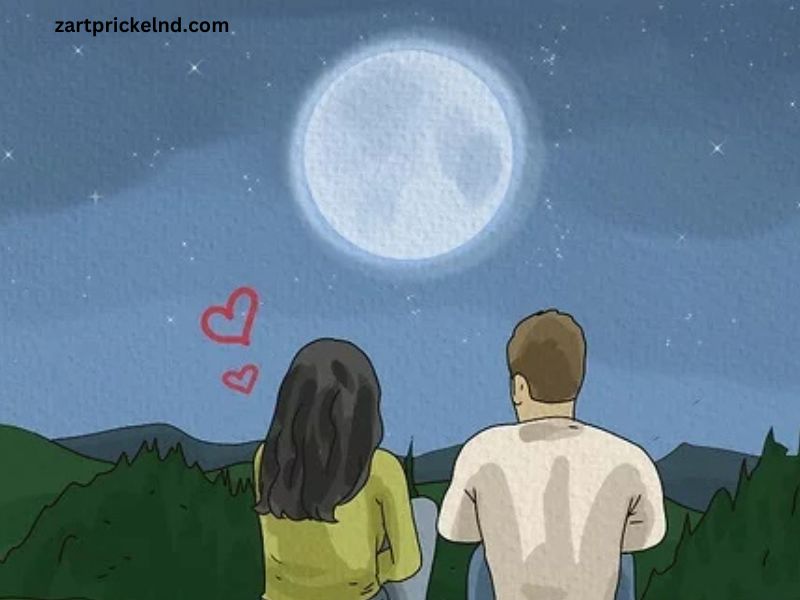The moon has captivated humanity for millennia. From ancient civilizations to modern poets, its serene glow and ethereal presence have inspired countless works of art, literature, and scientific inquiry. The phrase “The moon is beautiful, isn’t it?” transcends mere observation; it embodies a profound appreciation for the celestial body that governs our tides, influences our cultures, and sparks our imaginations. In this exploration, we will delve into the moon’s scientific significance, its cultural impact, and its role in our emotional lives.
The Moon Is Beautiful in Science
Formation and Composition
The Moon Is Beautiful, Earth’s only natural satellite, formed approximately 4.5 billion years ago. The leading theory, known as the Giant Impact Hypothesis, suggests that the moon was created from the debris left over after a Mars-sized body collided with the young Earth. This cataclysmic event shaped the moon’s current composition, primarily consisting of silicate rocks and dust.
The moon’s surface is marked by craters, maria (dark basaltic plains), and highlands, each telling a story of the solar system’s tumultuous past. Studying the moon helps scientists understand not only its history but also the processes that have shaped other planetary bodies. The lunar surface is a time capsule, preserving records of impacts and geological activity that have long since disappeared from Earth.
Lunar Exploration
Human interest in the moon reached new heights during the Space Race of the 20th century. The Apollo program, culminating in the historic Apollo 11 mission in 1969, allowed astronauts to set foot on the lunar surface. Neil Armstrong’s famous words, “That’s one small step for [a] man, one giant leap for mankind,” echoed around the globe, symbolizing a monumental achievement in human exploration.
Today, lunar exploration continues with missions from various countries. NASA’s Artemis program aims to return humans to the moon, while countries like China and India have launched their own lunar missions, contributing to our understanding of this celestial neighbor. As we explore the moon, we also consider its potential for future colonization and resource utilization, including the extraction of helium-3 for fusion energy.
The Moon in Culture
Mythology and Folklore
Throughout history, the moon has been a central figure in mythology and folklore. Many cultures have personified the moon, attributing to it various traits and powers. In ancient Greece, the moon was associated with Artemis, the goddess of the hunt, while in Roman mythology, it was linked to Luna. Similarly, in many indigenous cultures, the moon is viewed as a symbol of femininity, often representing cycles of life, fertility, and intuition.
The Moon Is Beautiful has also inspired countless legends. For example, in Chinese mythology, the moon goddess Chang’e is celebrated during the Mid-Autumn Festival, symbolizing reunion and harvest. The concept of the “man in the moon,” found in various cultures, reflects a shared human tendency to project our own narratives onto celestial bodies.
Literature and Art
The Moon Is Beautiful has been immortalized in literature and art. Poets from Li Bai in ancient China to Pablo Neruda in the 20th century have penned verses that capture the moon’s allure. In literature, the moon often symbolizes love, longing, and the passage of time. It has served as a backdrop for countless romantic scenes and moments of introspection.
In visual arts, the moon’s influence is equally profound. From Van Gogh’s “Starry Night,” with its swirling night sky and luminous moon, to Caspar David Friedrich’s romantic landscapes, artists have sought to convey the moon’s beauty and mystery. The interplay of light and shadow created by the moon inspires a sense of wonder and contemplation.
Music and Film
The moon’s beauty resonates through music and film as well. Iconic songs like “Fly Me to the Moon” and “Moon River” evoke feelings of romance and adventure, while the moon often serves as a poignant symbol in films, representing hope, dreams, and the unknown. The magical quality of moonlit nights has been depicted in countless cinematic scenes, drawing audiences into its enchanting embrace.
The Emotional Connection
The Moon as a Source of Inspiration
The moon has an undeniable ability to evoke deep emotions. Its phases—new moon, waxing, full, and waning—mirror the cycles of human life. The new moon signifies new beginnings, while the full moon represents culmination and fulfillment. This cyclical nature can inspire introspection and reflection, prompting individuals to consider their own journeys.
Many people find solace in The Moon Is Beautiful, using them as a time for contemplation and connection to nature. The tranquil beauty of the moon can bring peace during turbulent times, serving as a reminder of the larger universe beyond our immediate concerns. For artists and dreamers, the moon continues to be a muse, sparking creativity and imagination.
The Moon and Mental Well-Being
Interestingly, research suggests that the moon’s phases may influence human behavior and emotions. While studies on lunar effects are mixed, some evidence points to changes in sleep patterns and mood cycles correlating with the lunar cycle. The full moon, in particular, has been associated with heightened emotional responses and restlessness.
For many, the moon’s light provides comfort and inspiration. Observing the moon can be a meditative practice, fostering mindfulness and a sense of connection to the cosmos. Whether it’s through stargazing or simply enjoying the beauty of a moonlit night, the moon invites us to pause and reflect on our place in the universe.
The Moon’s Future
Advancements in Lunar Exploration
As we look to the future, the moon will play a pivotal role in advancing space exploration. NASA’s Artemis missions aim not only to return humans to the moon but also to establish a sustainable presence, serving as a stepping stone for future missions to Mars and beyond. The International Lunar Research Station, proposed by China and Russia, represents a collaborative effort to conduct scientific research on the moon.
The potential for lunar bases and resource extraction could revolutionize space exploration and even life on Earth. Helium-3, a potential fuel for fusion reactors, could be harvested from the moon’s surface, offering a clean energy source for the future.
Cultural Relevance in the Modern Era
As we continue to explore the moon, its cultural significance remains strong. The moon symbolizes not just a physical destination but also the human spirit of exploration, curiosity, and wonder. In an age where technology connects us like never before, the moon serves as a reminder of our shared heritage and the vast universe that lies beyond our planet.
The resurgence of interest in lunar exploration reflects a broader trend of looking to the stars for inspiration and guidance. The moon remains a powerful symbol of hope and possibility, encouraging us to dream big and reach for the stars.
Conclusion
The Moon Is Beautiful is indeed beautiful—both in its physical form and in the myriad ways it has influenced human culture and emotion. From its scientific significance to its artistic and emotional resonance, the moon serves as a reminder of our connection to the universe and to one another. As we continue to explore its mysteries, we find not only a celestial body but also a source of inspiration and reflection. The moon is a testament to the beauty of nature and the enduring human spirit, inviting us to look up, dream, and appreciate the wonders of our cosmos. So, the next time you gaze at the moon, take a moment to appreciate its beauty, its history, and its promise for the future.



